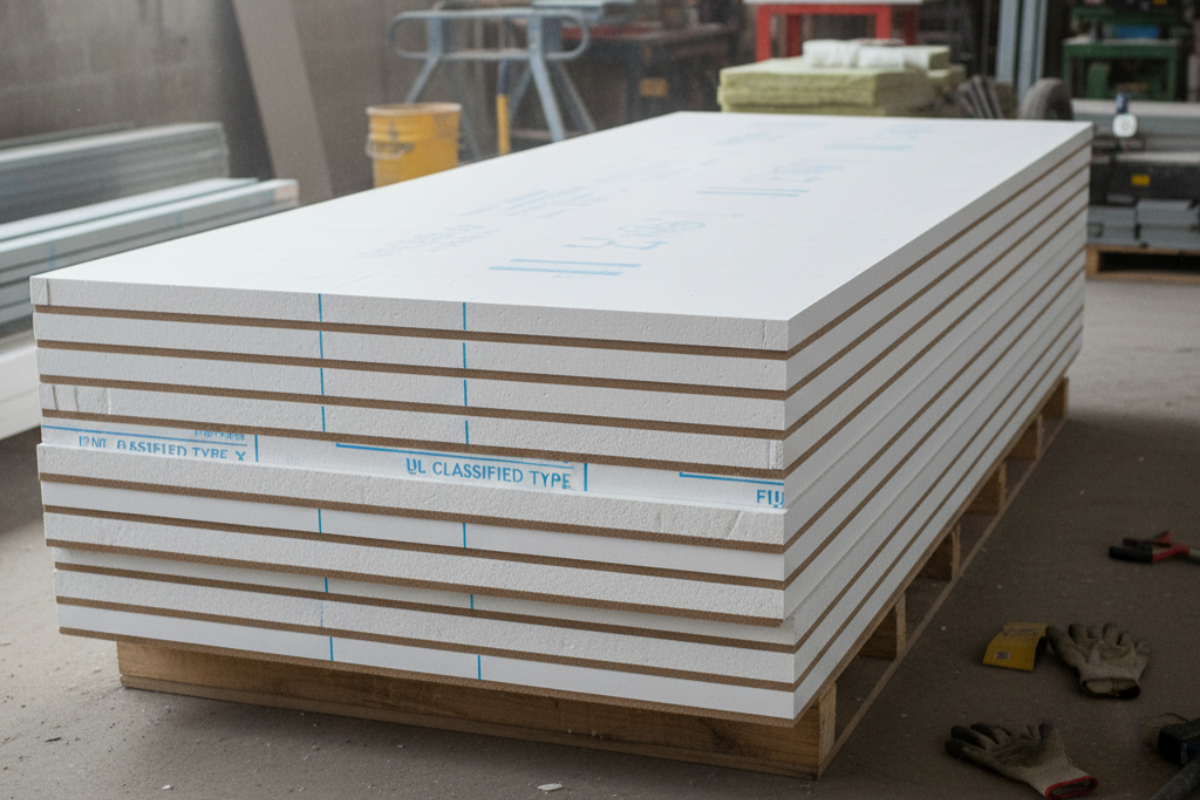Renovating your home in the Philippines is an exciting project. A smart way to manage costs is by learning about Gypsum Board in Philippine construction. This material is popular for walls and ceilings because it is affordable and easy to install. Many homeowners use it to create smooth, fire-resistant surfaces inside their houses. Understanding the costs of this material is key to a successful renovation budget.
What is a Gypsum Board?
Gypsum board is a common building material used for interior walls and ceilings. It is also known by other names like drywall or plasterboard. This board is made from a non-combustible gypsum core sandwiched between layers of paper. The standard size for a sheet is usually four feet by eight feet. They come in different thicknesses, such as 9mm and 12mm.
Types of Gypsum Board
There are different types of gypsum boards available for specific needs. The standard board is great for living rooms and bedrooms. Moisture-resistant boards are best for wet areas like bathrooms and kitchens. Fire-rated boards offer better protection and are often used in commercial buildings. Choosing the correct type is important for the safety and lifespan of your home.
Why Use Gypsum Board?
Gypsum board is an excellent choice for many reasons in the local setting. One main advantage is its high resistance to fire. The gypsum core naturally contains water, which slows down the spread of flames during a fire. This feature provides an important safety benefit for Filipino homes. It gives families more time to escape safely.
Cost-Effectiveness and Sound
Another major benefit is its cost-effectiveness. Compared to traditional concrete walls, gypsum board is generally much cheaper. This helps keep your overall renovation budget manageable. It also offers good sound insulation, making your rooms quieter and more private. The smooth finish is perfect for painting and other decorations.
Easy and Fast Installation
The ease of installation is another big selling point for contractors. Gypsum board is lightweight and can be cut and installed quickly with standard tools. Faster installation means less labor time, which saves you money. This also reduces the overall time your renovation project will take. It is a practical and quick solution for modern construction.
How to Create Your Gypsum Board Budget
Creating a precise budget for your gypsum board is simple if you follow key steps. The total cost includes the price of the materials and the labor for installation. Failing to consider both parts will quickly lead to budget problems. Taking time to estimate correctly will save you from surprise expenses later on.
Step 1: Measure and Quantify
Start by accurately measuring the area where you need the material. Measure the length and height of all walls or the total area of the ceiling. This measurement gives you the total square meters of coverage required. This number is your foundation for estimating material quantities. You can then convert the square meter area into the number of four-foot by eight-foot sheets you need.
Step 2: Factor in Material Costs
Next, you must factor in the current price of the boards. Standard 9mm gypsum boards are usually the cheapest option. Moisture-resistant and fire-rated boards will cost significantly more per sheet. Ask your local hardware store or supplier for an updated price list. Always buy a few extra sheets, maybe an additional 10%, to account for waste or mistakes. This small buffer can prevent costly delays.
Step 3: Include Accessories and Finishes
Your budget must also include all the necessary accessories and finishing materials. You will need metal frames, like furring channels and wall angles, to hold the boards up. You will also need joint compounds, paper tape, and screws to finish the seams. These small items add up quickly and must be part of your total material budget. Do not forget to include the cost of paint or other wall finishes.
Step 4: Estimate Labor and Installation
For the labor cost, contractors in the Philippines often charge by square meter. The price can vary depending on the complexity of the job and your location. Simple flat ceilings and walls are cheaper to install than ceilings with coves or complex designs. Get at least three quotations from different contractors to compare their rates. This helps you find a fair price for the high-quality work you want.
A typical installation rate, including labor and materials, can range significantly. Some contractors charge a single rate that covers everything from the frame to the finished paint. Always clarify what is included in the quoted price to avoid misunderstandings. Confirm if they will handle the cleanup and disposal of waste materials. Make sure the quote specifies the brand and quality of the materials used.
Step 5: Plan for Contingency
Finally, set aside an extra 10% to 15% of your total estimated cost for contingency. This is money set aside for unexpected costs or changes during the renovation. Even the most careful planning can miss small items or run into unforeseen issues. Having a contingency fund ensures your renovation does not stop halfway. It provides a cushion for your project.
Key Takeaway
A successful home renovation budget starts with a clear plan for your materials. Understanding the costs and benefits of using Gypsum Board in Philippine houses will save you money. This popular, affordable, and fire-resistant material is an excellent choice for interior spaces. By accurately measuring, getting quotes, and including a contingency fund, you can achieve your dream home without overspending.


